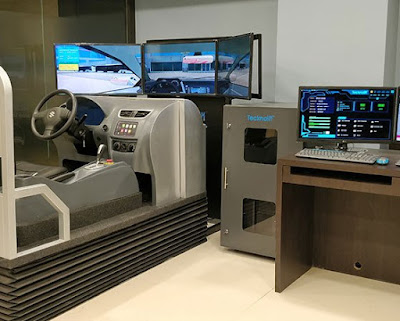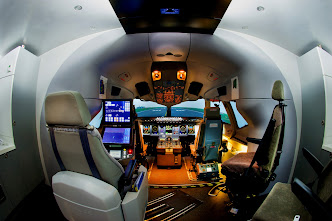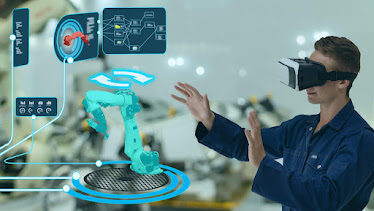Relevance of Driving Simulators in Today’s World
The use of simulations is no longer just limited to aviation or defense industries. Simulator technology is applied for driver training, recruiting processes, testing and R and D purposes. The use of driver training simulators is on the rise since shortage of skilled drivers is a serious concern. Simulators can effortlessly provide training on light, medium and heavy vehicles.
Features of the Simulator
There is no better way of educating drivers on
safe driving practices than using a driving simulator.
Some of the features of the simulator include the following:
Real Controls
If training on a car
driving simulator, it will have the controls of the actual car. The
driver has an experience similar to driving the actual car with several
scenarios being simulated in a safe environment.
A View of the Real World
The actual road may be uneven, rough and can
present a host of situations like harsh weather or heavy traffic. A driving
simulator gives the driver a view of the real world that he/she may have to
deal with.
Right or Left-hand Steering
Drivers can practice both right and left-hand
steering. The simulation software is adaptable to practice manual and automatic
transmissions.
Motion Platform
Motion platform gives a sensation of motion to drivers which is essential for a perfect driving experience.
Significance of Simulators in the Recruitment Process
Organizations can use simulators for recruitment and analysis of job performance of employees.
Accuracy: Employers can gather maximum information regarding an employee's abilities and skills within a short span of time. Where traditional tests can be time consuming, drivers can be reviewed faster with simulators.
Fairness: All candidates applying for a position are given a fair chance to showcase their skills. All drivers can be tested in the same environment which results in a transparent testing process. The results obtained are fair and unbiased.
Engagement: By integrating customized software that represents the exact terrains and situations that the drivers may have to deal with, drivers get a real and engaging experience of their role and responsibilities in the organization.
Continuous training: Depending on the introduction of new technologies and new roles assigned to employees, organizations can impart training and upgrade driver skills with a driving simulator from time to time.
The use of multimedia components such as video, audio, text and images make for an immersive experience for drivers. The cost of training every time on real vehicles is too high and involves a lot of risk. A driver’s alertness while driving during night time and how cleverly he/she tackles risky situations like collisions due to rain, thick fog or snow etc. can be tested with a driver training simulator.
Simulators can play an active role in reducing
the worrying rate of road accidents. Inadequate training and outdated methods
of testing are few of the major reasons behind a large number of poorly skilled
drivers.
Also Read: What Different Situations Can Be Effectively Tested With VR Training Simulators?
Conclusion
Tecknotrove is
a leading provider of simulator training solutions with over 800 projects
completed in 24 countries. With the latest technology enabled training
solutions, the company specializes in bespoke, scalable and immersive
simulators tailored to the needs of the organization. Get in touch for
simulators designed for a variety of applications.




Comments
Post a Comment